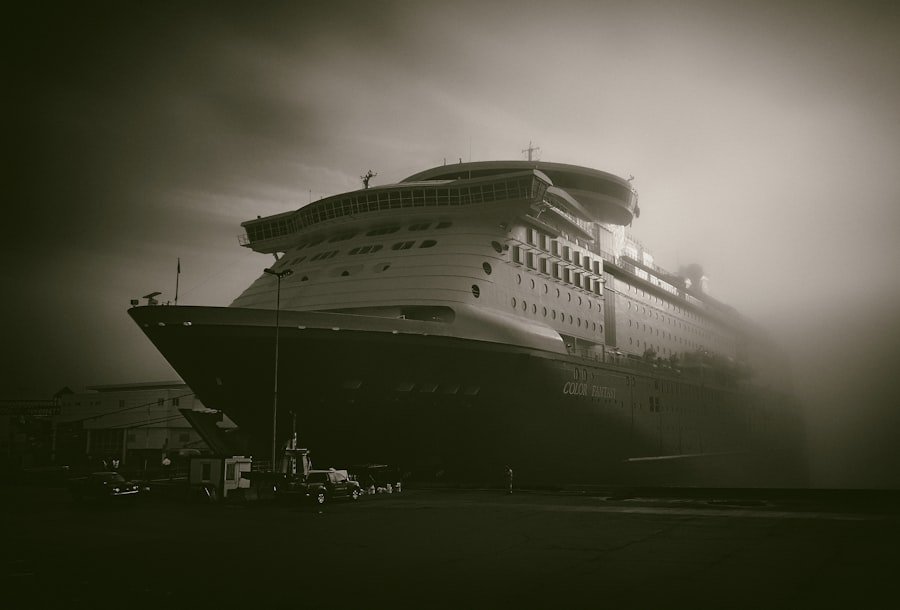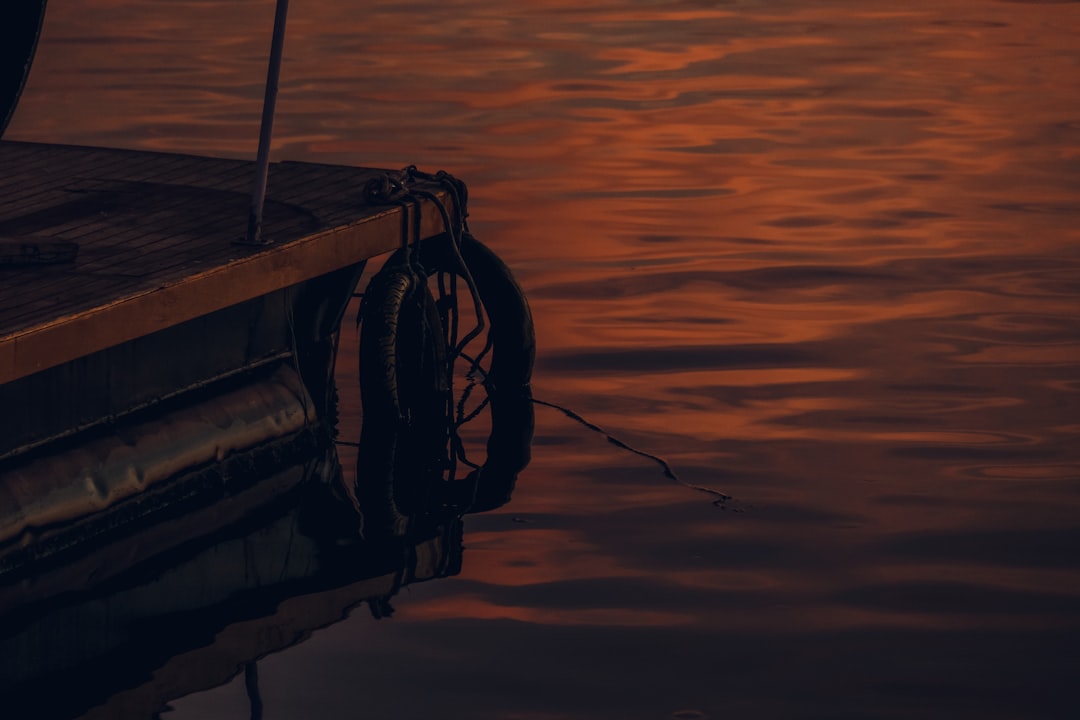The Drake Passage, a body of water that separates South America from Antarctica, is renowned for its tumultuous seas and unpredictable weather. Stretching approximately 600 miles, it serves as a critical maritime route for vessels venturing to the southernmost continent. Named after the English explorer Sir Francis Drake, who navigated these waters in the late 16th century, the passage has become synonymous with both adventure and peril.
Its unique geographical position not only makes it a vital link for maritime trade but also a gateway for explorers and researchers eager to study the pristine ecosystems of Antarctica. The passage is characterized by its deep waters and strong currents, which can create challenging conditions for even the most seasoned sailors. The convergence of the Atlantic and Pacific Oceans in this region results in a dynamic marine environment, where the cold waters of the Southern Ocean meet warmer currents.
This interaction contributes to the passage’s reputation as one of the most treacherous waterways in the world, attracting adventurers and scientists alike who seek to experience its raw beauty and formidable challenges.
Key Takeaways
- The Drake Passage is a treacherous body of water located between South America’s Cape Horn and the South Shetland Islands of Antarctica.
- Navigating the Drake Passage presents challenges such as strong winds, rough seas, and unpredictable weather conditions.
- Choosing the right vessel for the journey is crucial, with considerations for stability, size, and experienced crew.
- Packing essentials for a voyage through the Drake Passage should include warm clothing, waterproof gear, and seasickness medication.
- Safety precautions and emergency protocols are essential for any journey through the Drake Passage, including regular drills and emergency response training.
Understanding the challenges of navigating the Drake Passage
Navigating the Drake Passage is not for the faint of heart. The waters are notorious for their rough conditions, with waves that can reach heights of up to 30 feet during storms. These unpredictable swells can make even the most stable vessels feel like they are at the mercy of nature.
Mariners must be prepared for sudden changes in weather, as conditions can shift from calm to chaotic in a matter of hours. This unpredictability requires a deep understanding of maritime navigation and an unwavering respect for the power of the ocean. In addition to the physical challenges posed by the sea, there are also psychological hurdles that sailors must overcome.
The isolation of being surrounded by vast, open water can be daunting, and the potential for seasickness is a reality that many face. Crew members must maintain a strong sense of camaraderie and resilience to support one another through the rigors of the journey. Those who successfully navigate these challenges often emerge with a profound sense of accomplishment and a deeper appreciation for the forces of nature.
Choosing the right vessel for the journey

Selecting an appropriate vessel for traversing the Drake Passage is crucial for ensuring safety and comfort during the journey. The ideal ship should be equipped with advanced navigation technology and sturdy construction to withstand harsh conditions. Ice-strengthened vessels are particularly advantageous, as they are designed to handle not only rough seas but also potential encounters with icebergs and pack ice that may drift into the passage.
In addition to structural integrity, the vessel’s size and amenities play a significant role in the overall experience. Smaller ships often provide a more intimate atmosphere, allowing passengers to connect with their surroundings and fellow travelers. Conversely, larger vessels may offer more stability in turbulent waters and a wider range of onboard facilities.
Ultimately, choosing the right vessel involves balancing safety features with personal preferences for comfort and social interaction during the voyage.
Packing essentials for a voyage through the Drake Passage
| Essential Item | Reason |
|---|---|
| Warm clothing | The Drake Passage can be very cold, so warm clothing is essential to stay comfortable. |
| Waterproof gear | There can be rough seas and rain, so waterproof gear will keep you dry and protected. |
| Sea sickness medication | The Drake Passage is known for its rough waters, so it’s important to be prepared for potential sea sickness. |
| Binoculars | For wildlife watching and bird spotting during the voyage. |
| Camera | To capture the stunning landscapes and wildlife encounters during the journey. |
Preparing for a journey across the Drake Passage requires careful consideration of what to pack. Given the unpredictable weather conditions, layering clothing is essential. Passengers should bring waterproof outer layers, thermal undergarments, and sturdy footwear to ensure they remain warm and dry throughout their adventure.
Accessories such as hats, gloves, and scarves are also important for protection against biting winds and cold temperatures. In addition to clothing, travelers should consider packing personal items that enhance their experience. Binoculars are invaluable for wildlife watching, while cameras are essential for capturing breathtaking landscapes and memorable moments.
A good book or journal can provide entertainment during downtime, while seasickness medication is a must-have for those prone to motion sickness. By preparing thoughtfully, travelers can ensure they are well-equipped to enjoy their journey through this remarkable passage.
Safety precautions and emergency protocols
Safety is paramount when navigating the Drake Passage, and understanding emergency protocols is essential for all passengers and crew members. Before embarking on their journey, travelers should familiarize themselves with safety briefings provided by the vessel’s crew. These briefings typically cover essential information such as life jacket usage, emergency exits, and procedures for evacuating the ship in case of an emergency.
In addition to following established protocols, passengers should remain vigilant throughout their journey. This includes monitoring weather updates and being aware of their surroundings at all times. Crew members are trained to handle emergencies, but passengers also play a crucial role in maintaining safety by adhering to guidelines and reporting any concerns promptly.
By fostering a culture of safety awareness, everyone on board can contribute to a secure and enjoyable experience.
Wildlife encounters in the Drake Passage

One of the most captivating aspects of traversing the Drake Passage is the opportunity to encounter diverse wildlife in their natural habitats. The waters are teeming with life, including various species of whales, seals, and seabirds that thrive in this rich marine ecosystem. Passengers may have the chance to spot majestic humpback whales breaching or playful orcas swimming alongside their vessel.
Birdwatchers will also find delight in observing numerous seabird species that inhabit the region. Albatrosses, petrels, and skuas are just a few examples of the avian life that can be seen soaring above the waves. These encounters not only provide unforgettable memories but also serve as a reminder of the importance of preserving these fragile ecosystems for future generations.
Weather patterns and their impact on the journey
The weather in the Drake Passage is notoriously unpredictable, with conditions that can change rapidly from sunny skies to fierce storms within hours. This variability is influenced by several factors, including ocean currents, wind patterns, and seasonal changes. Understanding these weather patterns is crucial for planning a successful voyage.
However, even during this period, travelers should be prepared for sudden squalls or rough seas. Winter months bring harsher conditions, with increased chances of ice formation and severe storms.
Mariners must remain adaptable and ready to alter their plans based on real-time weather assessments to ensure safety throughout their journey.
Navigational strategies for crossing the Drake Passage
Successful navigation through the Drake Passage requires a combination of skillful seamanship and advanced technology. Experienced captains utilize sophisticated navigational tools such as GPS systems, radar, and sonar to chart their course accurately while monitoring potential hazards like icebergs or shifting currents. Additionally, understanding tidal patterns and local maritime charts is essential for safe passage.
Communication with other vessels in the area is also vital for ensuring safety during transit. By sharing information about weather conditions or potential obstacles, mariners can work together to navigate this challenging waterway more effectively. Ultimately, a combination of traditional navigation techniques and modern technology allows sailors to traverse the Drake Passage with confidence.
Cultural and historical significance of the Drake Passage
The Drake Passage holds immense cultural and historical significance beyond its geographical features. It has long been a site of exploration and discovery, attracting adventurers from around the world who seek to uncover its mysteries. Sir Francis Drake’s voyages in the late 1500s marked one of the first European explorations of these waters, paving the way for future expeditions that would shape our understanding of Antarctica.
In addition to its historical importance, the passage has become a symbol of human resilience and curiosity in the face of nature’s challenges. It serves as a reminder of humanity’s enduring quest for knowledge and exploration, inspiring generations to venture into uncharted territories. The stories of those who have crossed these waters continue to resonate today, fueling interest in maritime exploration and environmental conservation efforts.
Tips for a memorable and comfortable voyage
To ensure a memorable experience while navigating the Drake Passage, travelers should embrace flexibility and an open mind. Being adaptable to changing conditions will enhance enjoyment during unexpected moments or challenges that arise during the journey. Engaging with fellow passengers and crew members fosters camaraderie and enriches shared experiences.
Additionally, taking time to appreciate the breathtaking scenery is essential. Whether it’s capturing stunning photographs or simply soaking in panoramic views from deck chairs, moments spent admiring nature’s beauty will create lasting memories. Finally, maintaining a positive attitude throughout the voyage will help travelers embrace both the adventure and unpredictability that come with crossing this iconic passage.
Embracing the adventure of navigating the Drake Passage
Navigating the Drake Passage is an adventure that combines natural beauty with formidable challenges. From its tumultuous waters to its rich wildlife encounters, every aspect of this journey offers unique experiences that leave lasting impressions on those who dare to cross it. By understanding the complexities involved in traversing this iconic waterway—such as choosing the right vessel, preparing adequately for changing weather conditions, and embracing safety protocols—travelers can embark on their voyage with confidence.
Ultimately, crossing the Drake Passage is not just about reaching a destination; it is about embracing an adventure that tests one’s limits while fostering a deep appreciation for nature’s power and beauty. Those who undertake this journey often return transformed by their experiences—forever changed by their encounters with both the sea and themselves amidst its vastness.
For those interested in learning more about the experiences and challenges faced during a voyage through this infamous stretch of water, a related article can be found on MyGeoQuest. This article delves into the historical significance and the modern-day adventures associated with the Drake Passage. To explore this fascinating topic further, you can read the full article by visiting MyGeoQuest’s detailed exploration of the Drake Passage.
WATCH NOW! Drake Passage: Earth’s Deadliest Waters Revealed
FAQs
What is the Drake Passage?
The Drake Passage is the body of water between the southern tip of South America and the northern tip of the Antarctic Peninsula. It is known for its rough seas and challenging sailing conditions.
What is a Drake Passage voyage?
A Drake Passage voyage refers to a sailing journey across the Drake Passage, typically as part of an expedition to Antarctica. It is known for its unpredictable weather and rough seas, making it a challenging but exhilarating experience for travelers.
What can I expect on a Drake Passage voyage?
Travelers can expect to experience rough seas, strong winds, and potentially stormy conditions during a Drake Passage voyage. However, it also offers the opportunity to see a diverse range of marine wildlife and seabirds, as well as stunning scenery.
How long does a typical Drake Passage voyage last?
A typical Drake Passage voyage can last anywhere from 2 to 4 days, depending on the specific itinerary and weather conditions. It is important to be prepared for potential delays due to the unpredictable nature of the passage.
What should I pack for a Drake Passage voyage?
Travelers should pack warm, waterproof clothing, including a good quality waterproof jacket and pants, as well as sturdy, waterproof footwear. It is also advisable to bring seasickness medication and any other necessary personal items.
Are Drake Passage voyages suitable for everyone?
Drake Passage voyages are not recommended for individuals who are prone to seasickness or have difficulty with rough seas. It is important to consider your own physical abilities and comfort level before embarking on a journey across the Drake Passage.
